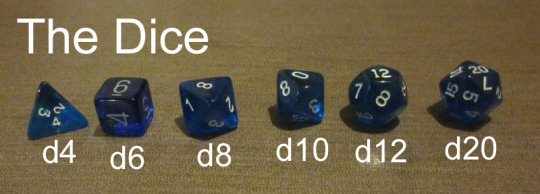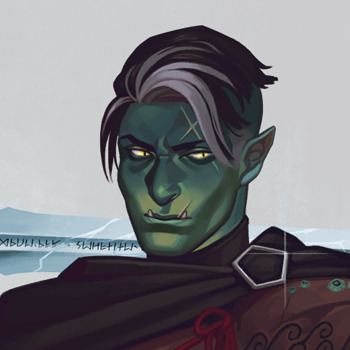#second edit: added more info abt pieces used
Explore tagged Tumblr posts
Text


thinking abt area x again... inspired by jeff vandermeer's annihilation (2014)
pieces bulletin monumental, vol. 35 (1869), société française d'archéologie [stone staircase] (2019), pixabay user id: jazella cmu typewriter typeface
#id in alt text#as always... click for better quality#book inspired#annihilation#southern reach trilogy#scifi#collage#digital collage#pxls#edit: opening in the first piece bothered me enough that i bit the bullet and fixed it#second edit: added more info abt pieces used
9K notes
·
View notes
Note
Could you do me a favor and tell me literally every piece of info abt dnd you can? Asking for an aster
@amethyst-aster (just so you see it)
hello!
so. this is long which is why there is a cut. i feel i ought to foreworn you that i read the entire players handbook cover to cover the summer i turned 11 because i was lonely and autistic. i memorized it (mostly. little rusty on some of the magic rules but whatever). /not sarcastic so! this is EXTREMELY LONG.
first up! your basics:
dungeons and dragons is a tabletop roleplaying game first created in 1974 by gary gygax. that's not so important. what is important is this: it is currently in its fifth edition (shorthanded as 5e). that is the one i know the most about and it is personally the one i think is the easiest to play, but thats my own preference. my biology teacher thinks 5e is bloody stupid and he plays the second edition (2e), which i find much harder and more limiting.
There are three core rulebooks, and a number of supplementary books.
The most important of those three (and the only one you need to know, really, unless you're the one running the game) is called The Player's Handbook (PHB). It contains the rules for building a character and playing them.
Because it will run you upwards of $50USD per copy, here is a pdf of it on archive dot org.
The other two is the Monster Manuel (MM) (a book of all the monsters in the game) and the Dungeon Master's Guide (DMG) (a book of how to run a game, but you don't need it as a player). They are here and here.
There are a number of d&d youtubers who have tutorial videos on this type of thing. my favorite is Ginny Di, but there are literally dozens out there.
BASIC TERMS
A Character sheet is the thing you have all the information about your character recorded on. It comes in several variations, but this is a free form fillable pdf version, and this is a free printable (both from the wizards of the coast (wotc) website, but the second is hosted on archive.org) (wotc are the company that owns the copyright to the game).
A class is the vocation of the character. its what they do with themselves, but its not necessarily a job.
A race is the character's species. this is also called their species, but in offical material you'll see it called their race.
A background is how their past shaped the character.
A backstory is that past.
Ability scores are the abilities of the character, they are determined with dice rolls. There are six of them, and many years ago someone explained them with tomatoes and that's still the easiest way to explain them in my opinion. You figure them out by rolling 4d6 and adding up the three highest numbers, for a total of 6 times.

ID in alt text. [I cannot find the original source, I am sorry, nor the graphic's source]
There are various types of dice, conveniently labeled with this image below:

ID in alt. [Source]
The d20 is the most important; its what you'll use to roll ability checks and saving throws and etc.
If you don't have your own physical dice (they are advalible online, at barnes & nobles, and at your local gaming store, but many people don't have a local gaming store (me)), you can roll them on many websites. My preferred one is this one, but any work. Google has its own built in, too.
MAKING A CHARACTER
So. You have your dice, now what?
Now you make a character sheet! there are many videos online explaining how to do this (there is a lovely one here and here), but i'm going to explain it here how I generally do it.
Step 0- OPTIONAL:
Take your character sheet, and come up with an idea. Who do you want to play? A gay disaster who can shapeshift? a hobbit? a chaotic ginger with too many cats and a habit of making deals with eldritch powers? You can be whatever the hell you want. alternatively, you can look at the options in the PHB first, and go from there.
Step 1- Pick a race/species.
There are well over 30 of these, and I'm not listing them all. But the ones advaliable in the player's handbook are as follows:
Dwarf. Your sterotypical mining, axe wielding, beared fantasy dwarf. ex: Gimli, in Lord of the Rings

ID in alt. [Source]
Elf. Traditionally depicted as tall, graceful, and living in the woods. Generally have pointed ears. ex. Legolas in Lord of the Rings.

ID in alt text. [Source]
Halfling. Literally just renamed hobbits, so they don't get sued. Known for being short and excellent cooks. ex. Frodo, Sam, Merry, & Pippin from Lord of the Rings. (I can't seperate them, it feels wrong)

ID in alt. [Source]
Human. We all know what humans are. Generally viewed as very adaptable species in d&d! also in real life. ex. Bill Nye the Science Guy.

ID in alt. [Source]
Dragonborn. A bipedal species descended from dragons. They're cool as shit. ex. I literally cannot think of one i'm sorry.

ID in alt. [Source]
Gnome. Known for being very tinkery, small, and causing mischief. Also, for some reason, for being in gardens. ex. Pike Trickfoot from Critical Role.

ID in alt text. [Source]
Half-elf. Half elf, half something else! They generally have a lot of angst, but not always. Sometimes people say they combine the best of both worlds (elf and human), and sometimes people say they have it really shitty. ex. Keyleth from critical role.

ID in alt. [Source]
Half-Orc. half orc, half something else! I dunno really how to describe them. ex. Fjord Lavorre from Critical Role

ID in alt. [Source]
Tiefling. A humanoid species with horns and a tail, and often brightly colored skin. Extremely Gender in my opinion.
Step 2- Pick a class.
There are 12 core classes, and one more added in a later book. I'll go over all 13!
ARTIFICER. A magical tinkerer. A bit like leo valdez in pjo? Their core stat is intelligence. In my opinion they're very complicated for a first character ever, but do what you want its your game i do not care.
BARBARIAN. If you want to wear no armor, have an axe (or other weapon), and charge into battle shouting, this is the class for you! its fun and decently simple for first time players, in my opinion. Core stat is Strength (and constitution).
BARD. Someoe who uses the magic of creation to do shit. Also known for seducing anything that moves, but that's optional. Core stat is charisma. Seems simple at first, but they have a lot of spells to manage at later levels, but they're not too hard. The main guy in the d&d movie is one.
CLERIC. They're healers and warriors. Generally have got some sort of divine magic, but don't necessarily have to. Semi-difficult? I haven't ever played one, so I don't know how easy it would be for a first character ever. Main stat is wisdom.
DRUID. Person who turns into animals and respects the enviroment. Basically, the lorax, but less orange and with more turning into animals (druid lovers out there i am sorry for saying y'all are the lorax please don't come after me with pitchforks). they're okay for a first character but they can be a little confusing. Main stats are wisdom (and constitution).
FIGHTER. Someone who fights things. The most basic of the d&d classes, and one of the simplest for first time players, probably, but I haven't ever played one so who knows. Main stats are strength or dexterity.
MONK. Person who punches people a lot. Like Aang from avatar: the last airbender. Main stats are dexterity and wisdom. They seem simple, but one of the mechanics is slightly confusing, but they're still really simple.
PALADIN. Your tradition knight. A guy (gender neutral) in plate armor with a horse and loyalty issues. I love playing paladins so much, they're great. Personally I think they're a little confusing. Main stats are Strength & Charisma.
RANGER. Someone who wanders through the forest and fights things, like strider (but not like aragorn) from lotr. Core stats are wisdom and strength. My first ever character was an elf ranger named Thia Nailo. She was awesome. Rangers can also have pet panthers and shit, and sometimes small dragons (not tiny dragons, though. Like horse sized dragons).
ROGUE. A thief. My second ever character, and the first one who I played for any significant length of time (thia's campaign died out) was a half-elf rogue named Enna Helder-Kromlin. Rogues are a really good class for first time players, I feel like. Core stat is dexterity.
SORCERER. Someone born with magic. Main stat is charisma. They can be a little complicated.
WARLOCK. Someone who made a deal with some sort of higher power (eldritch being, god(s), etc) for magic. they make bad decisions for a living and its awesome. my favorite ever character was an elf warlock named Mara. Her patron lived in a shield and she had a wisdom of 5 but a charisma of 20. Core stat is charisma.
WIZARD. Gandalf. Someone who studied magic and learned it that way. Main stat is intelligence. They can get really complicated, really fast, but they're still a viable option for your first time.
Step 3- Backstory
There are other things to do, but its late and i'm tired. What you need to do from here is figure out what your character's life was like before now. Or, if you dont want to, then get a vibe for their personality or something.
NOW WHAT?
When you have a character, your DM (Dungeon master, the person running the game, the ''narrator'') will give you scenario, and you roleplay your way through it.
Literally anything can happen. It's d&d. the rules are suggestions, not actual rules. Make it what you want it to be!!!!
If you have other questions please contact me I love them even if it takes me forever to answer them sometimes.
11 notes
·
View notes